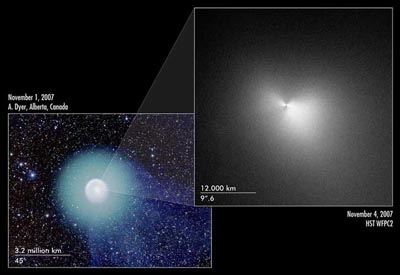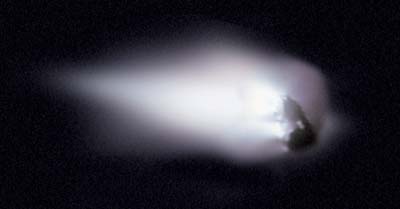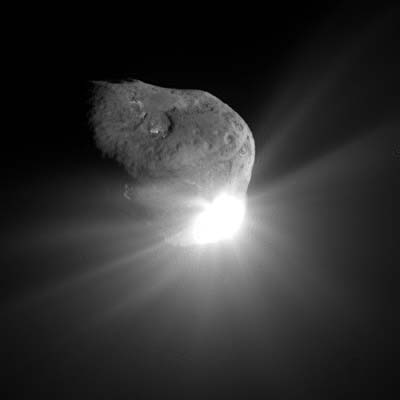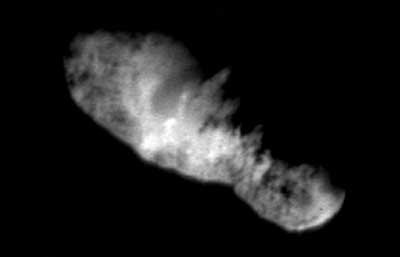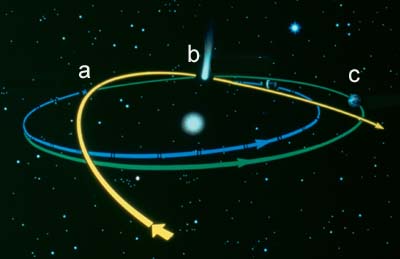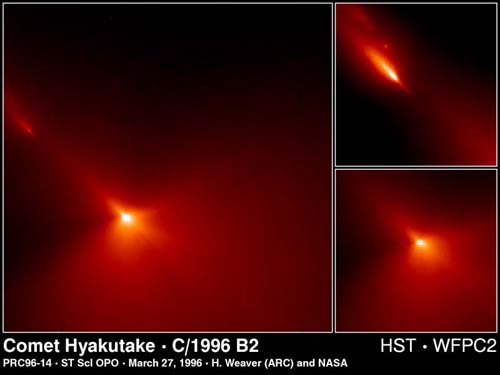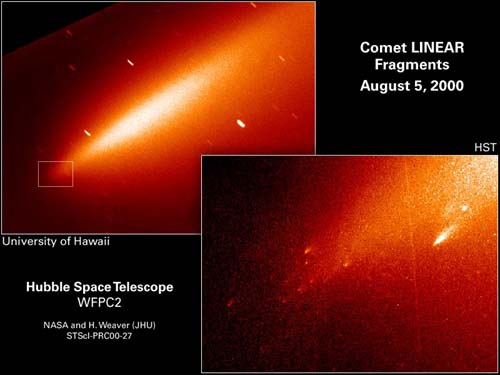Comets
Their name comes from latin “Stella cometa”, star with hair.
Unlike the other small bodies in the solar system, comets have been known since antiquity. There are Chinese records of Comet Halley going back to at least 240 BC. The famous Bayeux Tapestry, which commemorates the Norman Conquest of England in 1066, depicts an apparition of Comet Halley.
As of 1995, 878 comets have been cataloged and their orbits at least roughly calculated. Of these 184 are periodic comets (orbital periods less than 200 years); some of the remainder are no doubt periodic as well, but their orbits have not been determined with sufficient accuracy to tell for sure.
Comets are sometimes called dirty snowballs or "icy mudballs". They are a mixture of ices (both water and frozen gases) and dust that for some reason didn't get incorporated into planets when the solar system was formed. This makes them very interesting as samples of the early history of the solar system.
When they are near the Sun and active, comets have several distinct parts:
Nucleus: relatively solid and stable, mostly ice and gas with a small amount of dust and other solids
Coma: dense cloud of water, carbon dioxide and other neutral gases sublimed from the nucleus; (planet size: 40,000 km in diameter)
Hydrogen cloud: huge (millions of km in diameter) but very sparse envelope of neutral hydrogen;
Dust tail: up to 10 million km long composed of smoke-sized dust particles driven off the nucleus by escaping gases; this is the most prominent part of a comet to the unaided eye;
Ion tail: as much as several hundred million km long composed of plasma and laced with rays and streamers caused by interactions with the solar wind.


